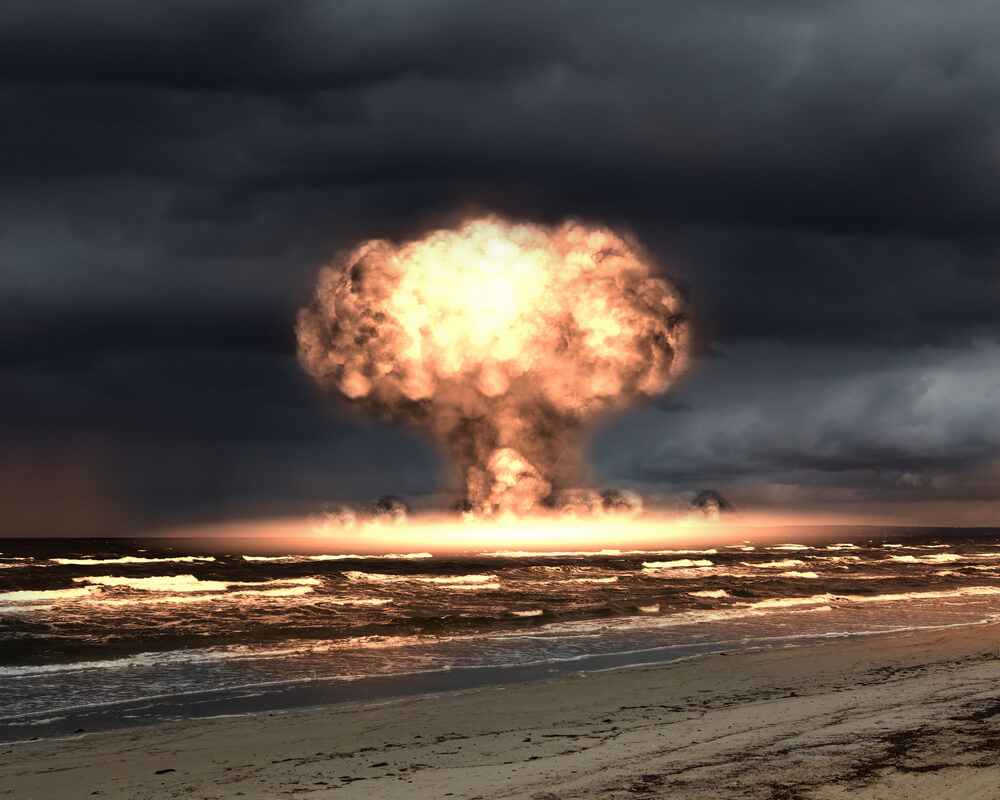The explosion and emission of radiation at the landfill in Russia puzzled the United States: what did Russian nuclear scientists
Russian Ministry of Defense On August 8, a liquid-propellant engine was tested, culminating in the explosion and death of several military and civilian specialists from the Russian Federal Nuclear Center.

Фото: Depositphotos
The subsequent release of radiation raised many questions and theories about testing a new type of weapon, and US President Donald Trump said that his country “learned a lot,” thanks to what happened. What really happened, the journalists tried to figure outTapes.ru".
Incident
The incident occurred on August 8 at the 45 State Central Marine Test Site of the Russian Navy, located on the White Sea coast, during work related to the engineering and technical support of isotopic power sources in a liquid propulsion system. Corresponding events that were conducted on a land or offshore platform provoked a fire, and then an explosion.
According to a note from the Institute for the Safe Development of Atomic Energy (IPBRAE) that got into the network, in 11: 50 Moscow time, the sensors of the Automated System for Monitoring the Radiation Situation (ASKRO) recorded in Severodvinsk an increase in radiation background lasting about 20 minutes. The low magnitude of such a jump means that the isotopic power sources had a low power, and its short duration was the quick localization of a preserved or destroyed propulsion system inside a ground shelter, ship, or under water.
On the subject: List of military bases: NATO accidentally revealed the location of US nuclear weapons in Europe
“The dose of radiation, which was additionally accumulated due to this increase, is at the level of microroentgen. This is a thousand times less than the permitted annual dose of radiation, ”- сказал Director, IPBRAE RAS Leonid Bolshov shortly after the incident, noting that "there is simply no need to talk about the threat of a security breach."
However, later, Roshydromet admitted that the radiation level in Severodvinsk after the incident was 16 times higher than normal, writes “Voice of America".
According to the environmental organization Greenpeace, the level of radiation increased 20 times. Roshydromet said on Tuesday that, according to its data, the level of radiation increased by 4-16 times.
After the explosion, ambulance helicopters flew to the area of the incident, bringing the injured to specialized medical institutions. Currently, it is known that at the military training ground two representatives of the Ministry of Defense and five RFNC-VNIIEF employees were killed, six people were injured, three of whom are in serious condition.
A couple of hours after the incident, the Administration of the Western Arctic Seaports (Murmansk), at the request of the Ministry of Defense, the Dvina Bay area of the White Sea was closed for free navigation from August 9 to September 9. This decision can be explained by the need to extract fragments of the propulsion system that have fallen into the water as a result of the explosion or to clean the water area from the toxic components of the plant's fuel.
Cause
Initially, among the versions of what happened, two were considered priority. According to the first, work related to the Zircon hypersonic missile was carried out at the 45 State Central Marine Test Site of the Navy. In this case, the source of radiation could be catalytic additives in the fuel for liquid propellants or damage to an atomic ship specially involved in the tests or accidentally found in the area of their conduct. However, after the information on the use of isotopic power sources was published, this version was dropped, since isotope power sources are not used in Zircons.
On the subject: How the war of the USA and Russia in the Black Sea will end: an assessment of the American media
The second and most acceptable explanation for what happened now is the testing of the elements of the low-flying, inconspicuous cruise missile of global range "Petrel", which should be equipped with a small-sized nuclear power plant (NPP). Based on the latest data, such a rocket should receive at least two stages, the first of which is equipped with a missile or aviation remote control with decylin or heptyl as a fuel component, and the second with an air-jet engine (WFD) with one or more radioisotope thermoelectric generators (RTGs) ) Thus, decilin or heptyl caused a fire near Nenoksa, and the fluctuation of the radiation background caused RTG.
The version of the tests of a cruise missile with a small-sized nuclear power plant is also indicated by satellite data, according to which the object near Nenoksa resembles a site on the Pankova Zemlya peninsula of the South Island (Novaya Zemlya archipelago), where in November of the 2017 of the year, probably, a throw-out (according to other sources, partially successful ) the launch of the Petrel, and another site located in Kapustin Yar (Astrakhan Region), which, presumably, was used to test missiles without nuclear power.
US intelligence opinion
US intelligence officials linked the explosion near Severodvinsk with tests of the Burevestnik cruise missile. It is reported The New York Times with reference to its sources.
American intelligence believes that the explosion occurred during testing of elements of the low-flying intercontinental missile "Petrel", which should be equipped with a small-sized nuclear power plant.
On the subject: "NATO has no immunity": how does the alliance counter the nuclear threat from Russia
The characteristics of the Burevestnik declared by Putin make it almost impossible for existing missile defense systems in Alaska and California to intercept it. The missile has an unlimited range of action, and its flight trajectory is unpredictable, which makes it invulnerable “to both existing and future missile defense and air defense systems,” the head of Russia noted in 2018, presenting Burevestnik.
However, American experts believe that the creation of such a rocket is impossible, since the United States has not been able to succeed in developing such a technology in the 50 and 60 of the last century.
Trump's Reaction
The head of the White House, Donald Trump, said that the United States “learned a lot” from the explosion at a military training ground in Russia, where a rocket with the Burevestnik nuclear power plant was allegedly tested.
"The explosion of the Russian Skyfall (" Petrel "according to NATO classification) caused many to worry about air pollution in the test area and at a great distance from them. This is not good, ”Trump wrote in Twitter. He added that the United States has similar, albeit more advanced technologies.
Read also on ForumDaily:
US withdraws from rocket treaty with Russia: is the world waiting for a new cold war
Study: what will be the war between NATO and Russia
Subscribe to ForumDaily on Google NewsDo you want more important and interesting news about life in the USA and immigration to America? — support us donate! Also subscribe to our page Facebook. Select the “Priority in display” option and read us first. Also, don't forget to subscribe to our РєР ° РЅР ° Р »РІ Telegram and Instagram- there is a lot of interesting things there. And join thousands of readers ForumDaily New York — there you will find a lot of interesting and positive information about life in the metropolis.











